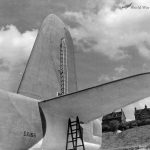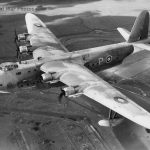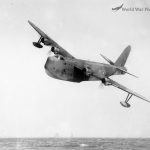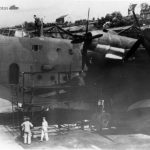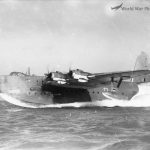Tail section
Prototype DX166 in flight
Prototype DX166 in Flight
Prototype DX166 in Flight October 1945
Shetland Prototype in flight
Shetland at Rochester
Shetland 1945
Shetland 1st Prototype DX166 October 1945
Four-engined flying boat Shetland
The Short Sunderland was the primary flying boat used by the RAF during World War II. The machines were quite successful, but RAF officials realized the need to develop its successor. The first specification for a new long-range heavy flying boat, which was ultimately to be the successor to the Sunderland, appeared as early as 1939. In 1940, the specification was withdrawn and replaced by a new one, the R.14/40. Short and Saunders-Roe had developed designs for machines that matched the specification, but RAF Headquarters decided that the best solution would be to merge the two designs into one. This solution was not only to lead to a more refined design, but also to facilitate series production in both factories simultaneously. The detailed designs were based on plans for the Saunders-Roe S.41 flying boat, while the general plans for the shape of the fuselage and wings came from Short’s design. The end result was an aircraft named Short Shetland. The prototype was flown on December 14, 1944, with John Lankester Parker and Geoffrey Tyson at the controls. Tests showed that the aircraft generally performed quite well, but required improvements to increase flight stability. Due to the situation at the front, the aircraft was tested in a transport configuration rather than in a combat configuration. With the end of World War II, the machine was transferred to the Marine Aircraft Experimental Establishment for testing, but before all tests were completed, the aircraft was destroyed in a fire, on January 28, 1946. The second prototype was not completed as a military machine. Instead, it was converted into a passenger aircraft, which was to take 70 passengers on board in its final configuration. In practice, however, it was limited to 40 seats for the duration of the trials. The machine was flown on September 17, 1947. Despite the trials, no buyers could be found for the aircraft, so serial production was not undertaken. After several flights, the aircraft was retired and scrapped in 1951.
If Short Shetland had been developed a little earlier, it probably would have entered limited production and service in the RAF. The end of the war, however, meant that demand for a machine of this type diminished, and after the war, with the advent of new land-based aircraft with long range, flying boats quickly lost their raison d’être.
